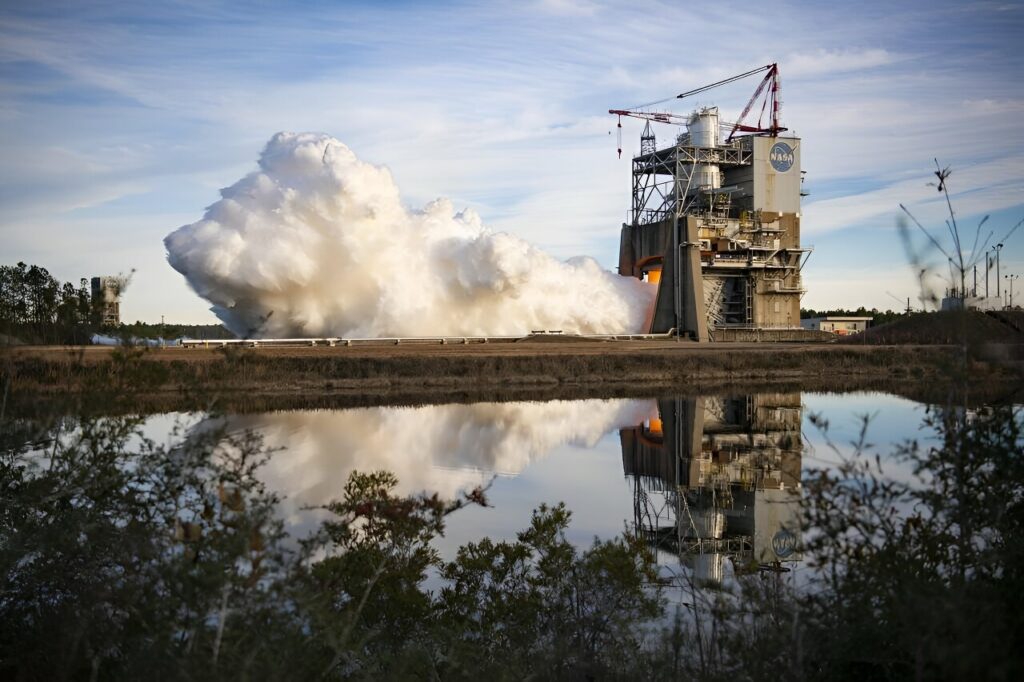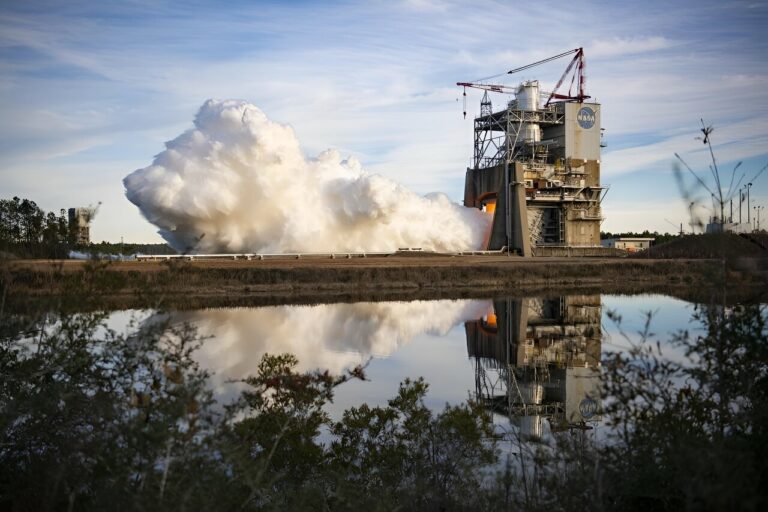NASA Persists in Artemis Moon Rocket Engine Testing with Initial Hot Fire in 2024
On January 17, NASA conducted a significant test series for the future flights of the SLS rocket as part of the Artemis campaign. The test involved a full-duration hot fire of the RS-25 engine on the Fred Haise Test Stand at NASA’s Stennis Space Center in Mississippi. The purpose of this test series is to collect data that will be used to certify the production of new RS-25 engines by Aerojet Rocketdyne, the lead contractor. These engines will be crucial in powering the SLS rocket for upcoming Artemis missions to the moon and beyond, starting with Artemis V.
The test series focuses on evaluating the performance of various engine components, including the nozzle, hydraulic actuators, flex ducts, and turbopumps. This is the second and final series aimed at certifying the production of upgraded engines. NASA previously completed an initial 12-test certification series with the upgraded components in June 2023.
During the January 17 test, operators followed a “test like you fly” approach, simulating the engine firing for the same duration required for an actual launch of the SLS rocket, which is approximately eight-and-a-half minutes (500 seconds). The engine was operated at power levels ranging from 80% to 113%.

This test took place three months after the current series began in October. In the previous tests conducted last fall, the engine was fired for durations ranging from 500 to 650 seconds. The longest test of the series occurred on November 29, where the engine was gimbaled, or steered, during an almost 11-minute (650 seconds) hot fire. Gimballing is a technique used to control and stabilize the SLS rocket as it reaches orbit.
It is important to note that each SLS flight requires four RS-25 engines to fire simultaneously during launch and ascent, generating over 2 million pounds of thrust. The first four Artemis missions with SLS are utilizing modified space shuttle main engines, capable of powering up to 109% of their rated level. The newly produced RS-25 engines will have the capability to power up to the 111% level, providing additional thrust. Testing up to the 113% power level ensures an added margin of operational safety.
Upon the conclusion of the test campaign in 2024, it is anticipated that all systems will be ready for the production of 24 new RS-25 engines. These engines will be utilized for missions commencing with Artemis V.
NASA’s Artemis program aims to establish a sustained presence on the moon for scientific exploration, in collaboration with commercial and international partners. This initiative will enable NASA to gain valuable insights on living and working in an extraterrestrial environment, while also paving the way for future human expeditions to Mars.
This article is republished from PhysORG under a Creative Commons license. Read the original article.
Do not forget to share your opinion with us to provide you with the best posts !




0 Comments